Want to transform your plain ol' veggie platter into swoon-worthy crudites that will make everyone eating more than just carrots, celery and cucumbers? Here's how to prep and cut different vegetables for crudites. Shall we?
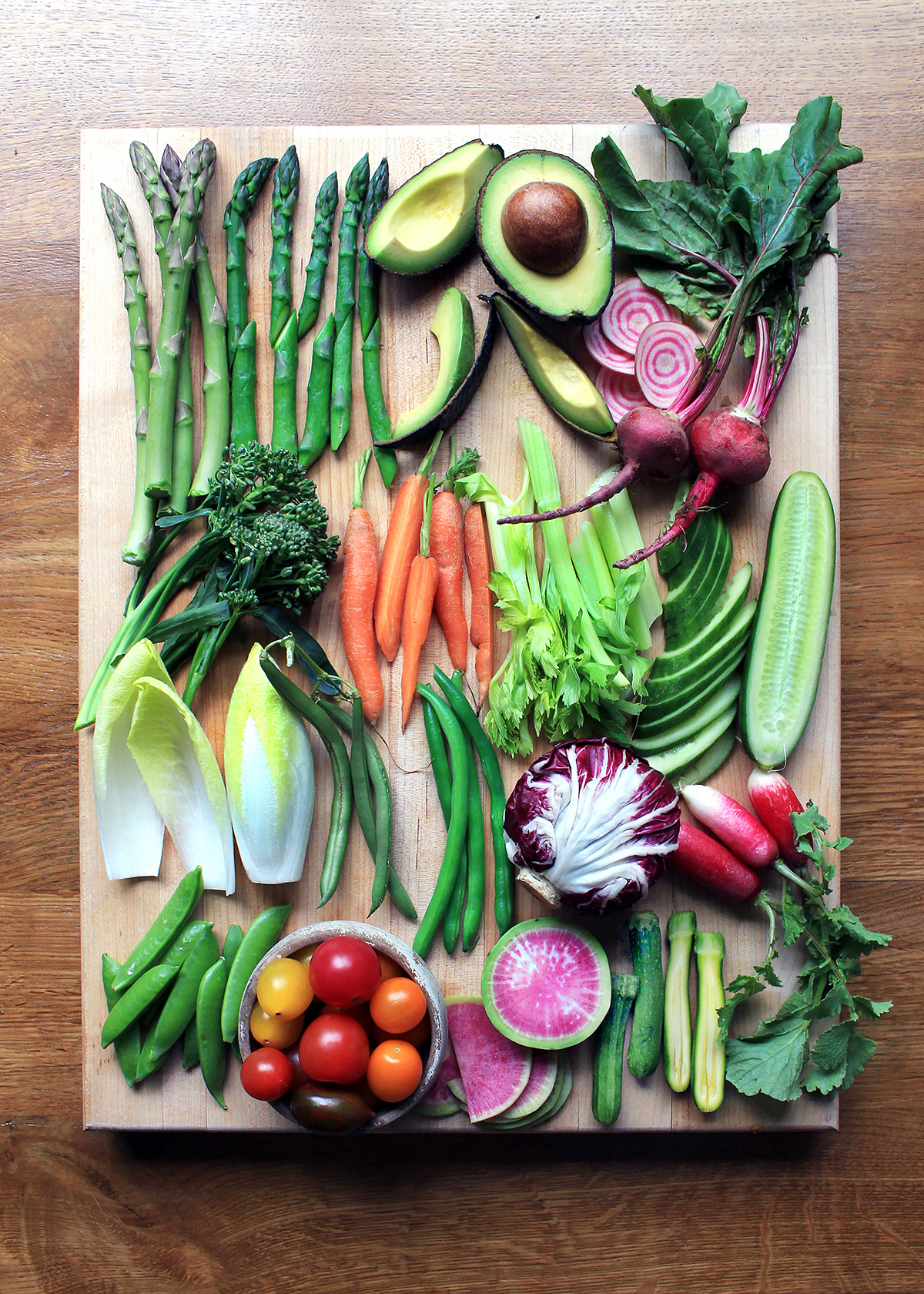
Explore More
What are Crudités?
Look, crudités are nothing more than a fancy French way of saying "veggie platter." But whereas I associate a veggie platter with those sad bagged baby carrots, celery, and dried out cucumbers, crudités make it into a party. So yes, technically crudités are the same thing as a veggie platter.
Crudités, however, are not a "veggie charcuterie board," although I'm not going to be a d!c% and
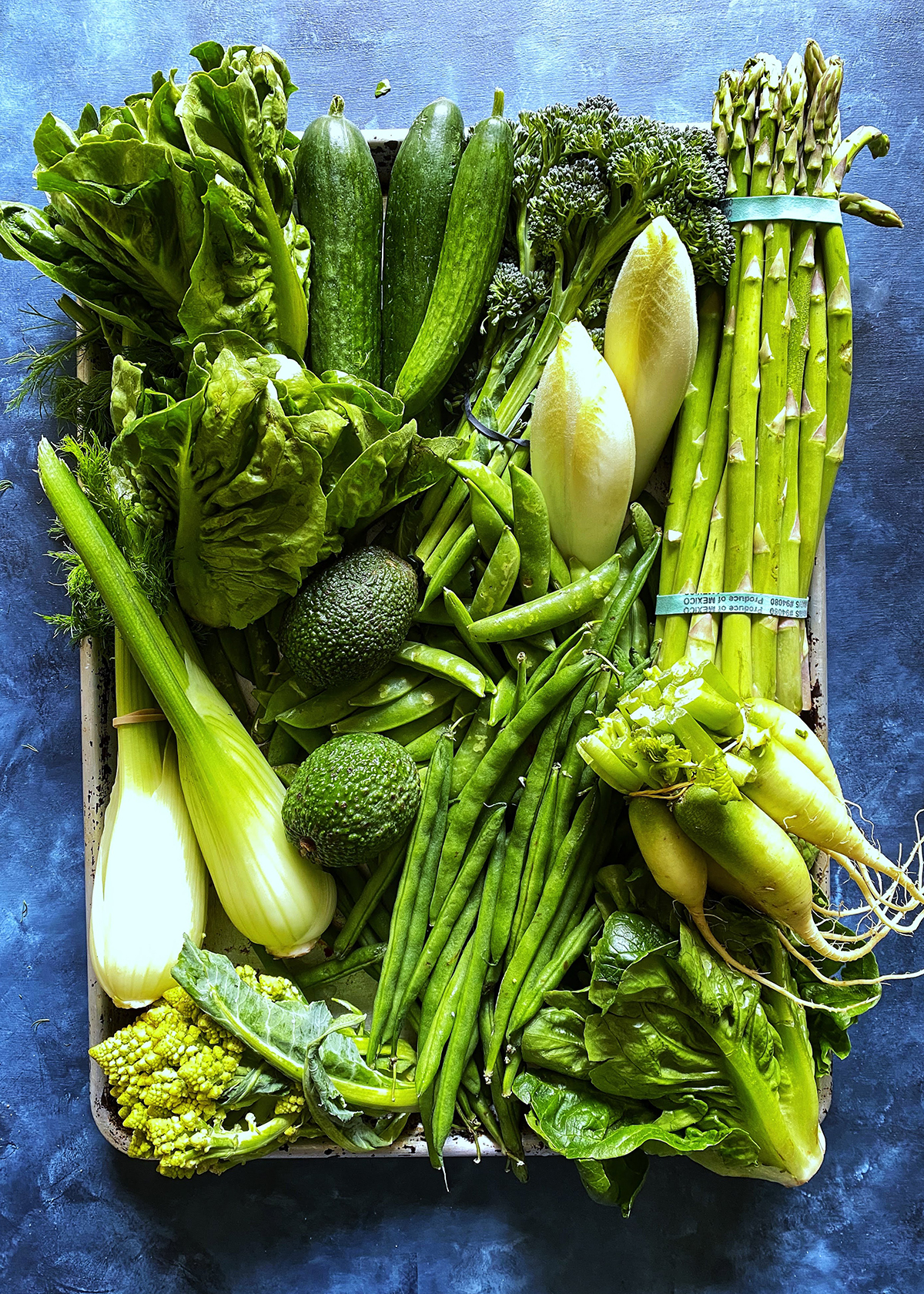
Step 1: "BAE WASH" aka Wash Everything
Before All Else: WASH. Prepping fruits and vegetables for crudité or anything really, always start with the same thing: wash everything. I mean everything, even the vegetables that you will peel by pulling the skin off like avocado, and even the vegetables you might peel with a peeler like carrots because you’re going to touch the dirty skin outside, peel the skin off, but then touch the inside with your now dirty hands.
It’s not just about pesticides and/or germs. You don’t know who touched what, what touched what, and even the vegetables that are organic, local, straight from the farm, straight from your very own backyard garden, have dirt, environmental dust, and droppings (so gross I know, sorry!), which organic or not, isn’t pleasant to feel in your mouth. Or maybe it is for yours, I don't know what kind of organic oral kink you're into.
Helpful note: I have been using an organic fruit and vegetable spray wash for years. The spray helps loosen dirt and some of the natural waxes on fruit and vegetables skins. See TOOLS section below for detailed information on that.
Next step, wash everything. Oh, did I already say that? So important, I say it twice.

Step 2: Peel, Prep, Present
There are many ways to prep and present vegetables for a crudité board. Most vegetables are fine just washed, maybe peeled, and served raw.
A few vegetables do better if they are lightly blanched — asparagus, broccoli, cauliflower, green beans — sometimes because the "rawness" is taken down to a little more edible, sometimes because it just makes the vegetables' color a little brighter.
You can also lightly pickle some vegetables to add interest to a very large board — beets, cucumber, radishes. Beets are also great if roasted. Don't go too crazy with the pickling and roasting though, the point of a crudités board is that the vegetables are bright and fresh.
The following list explains what I do in my kitchen to each of the vegetable types to get them ready for the serving plate or board. The vegetables are categorized into Raw or Not Raw, which means lightly blanched, marinated, pickled or roasted; then listed in alphabetical order. Refer to the photo above for visual guidance, where also the vegetables are pictured in alphabetical order left-to-right because I am a weirdo.

How to Cut Vegetable Crudités that You Serve Raw
Can You Serve Avocado on a Veggie Platter?
YES! When it comes to party boards, people usually think of avocado as a base for a dip like guacamole. You can do the usual like that, or you can be a motherfucking hero and serve whole wedges of avocado that people will think is awesome and brilliant and unexpected.
If you can find the teeny tiny avocados that are about 3 inches tall, those are perfect and make sure they are closer to the firm side of the firm-ripe spectrum.
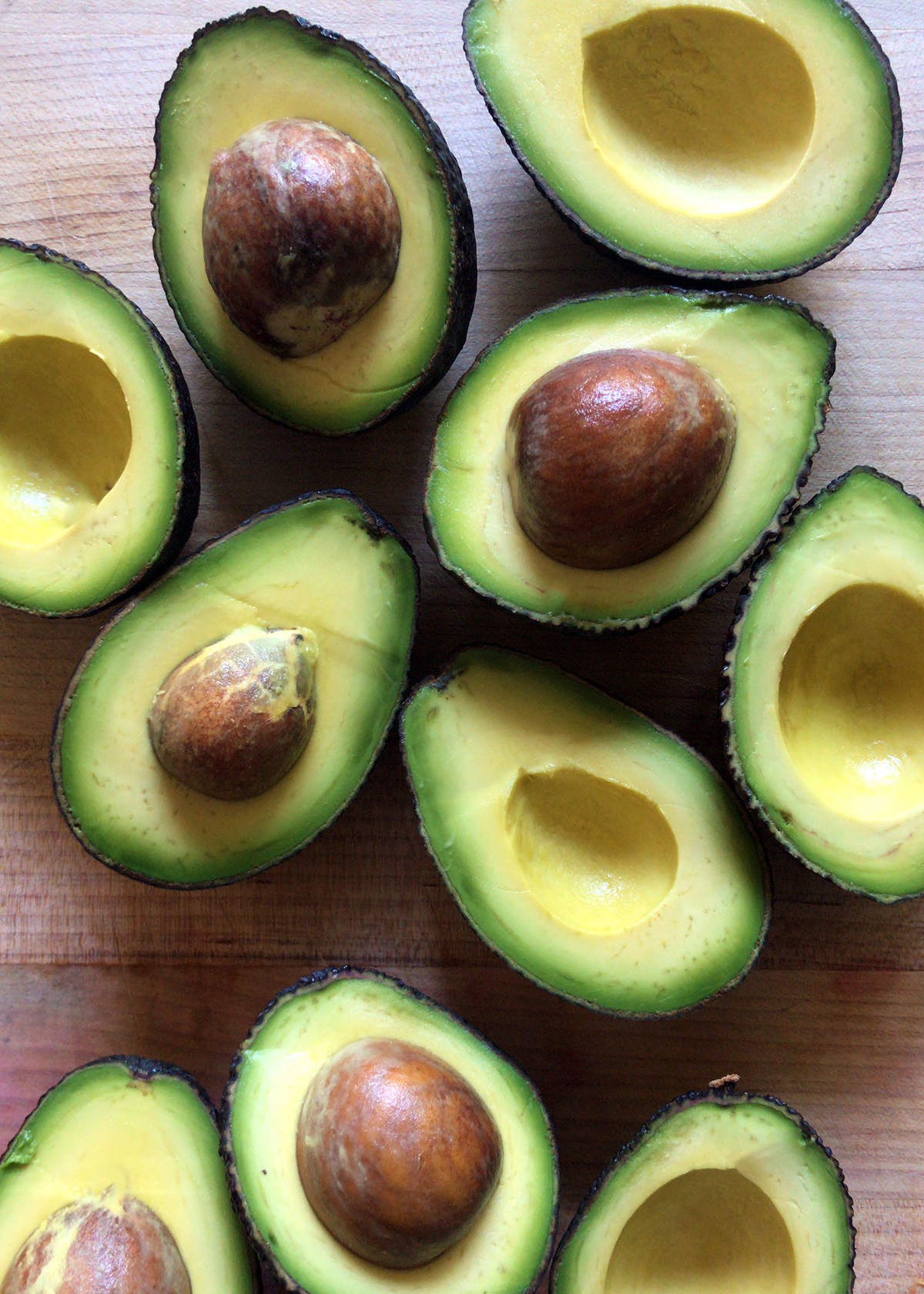
Cut straight through the skin and cut the avocado the “long way” into halves first. Pull the halves apart, remove the pit
No-waste Pro-tip: save the pit to grow into a tree!
Slice the halves, still with the skin attached, into quarters, then eighths. Leaving the skin and flesh intact keeps more of the avocado from oxidizing, and makes it easier for guests to pick up with their hands. Guests can peel the skin back like a banana. Side note: I hate bananas. Side side note: I buy them anyway for banana bread.
Pro-tip for keeping avocados from turning brown/oxidizing: Rub them with olive oil or avocado oil. The oil is a better protective coating from oxygen than lemon or lime juice.
Carrots for Crudités, Part of the BIG 3 Cs for Crudités
You know how to make carrot sticks out of normal carrots. But if you really want to go big, go small. Look for little baby carrots, even better if they still have their green tops, that you can serve whole. You don’t need to peel the baby carrots, just scrub them very well. You can use a scrubbing brush; we use a clean dishwashing scrubbing sponge that is set aside specifically for vegetables.
Trim the green carrot tops down to about ¾-inch.
Use a sharp paring knife to “scrape” some of the dark stuff from around the “neck” where the greens attach to the top of the actual carrot. I have no idea if this dirt, but it doesn’t look great, so do what you can to scrape it off.
Serve the baby carrots whole if they’re thin enough, or slice them length-wise into halves or quarters.
Celery: How to Make it Cute for Crudités
You probably already did this in order to thoroughly wash the celery, but if not, remove outer stalks that are bruised or too “tough.”
Cut off about 2 inches of the root end, which you can stick it in a small cup of water to grow into new celery!. Then pull apart the stalks. Trim the leaves of any brown or wilted leaves and bits.
Cut each stalk into thirds, about 3-inch pieces. I make bias (diagonal) cuts because that is how we have cut vegetables our whole lives. Serve the most tender inner stalks, and also the leafy tops, which present well on the board.
Cucumber: Whole, Spears or Coins
If you can find very small Persian cucumbers, just serve them whole, which is something I learned from Persian friends. Otherwise, cut them into spears. I do this because the longer spear shape matches most of the other vegetables. It’s also fine to cut the whole cucumber into round coins, you pagan.
Cut the cucumber in half length-wise.
Make ½-inch slices along a deep bias to make spears.
Endive, Radicchio and Treviso: Nature's Fritos Scoops
Pull apart the leaves, and trim the bottom of each leaf of the jagged edges. Great for scooping. For radicchio and treviso, the innermost leaves are sturdier and better for scooping or dipping.
Radishes: Leave the Leaves!
I love every kind of radish ever, but for a Party Board, I like slightly less common radish varieties like French Breakfast Radishes, the longer-shaped ones that are dark fuschia/red and white. Prep these kind of radishes the same way as baby carrots, scrubbing them well, leaving the green tops and leaves, and scraping away the dark spots around the “neck.” If you have access to a farmers market, you may be able to find green honeydew and purple ninja radishes. For regular round radishes, cut into small wedges, or thinly slice on a mandoline into rounds like baby beets.
Sugar Snap Peas
Use kitchen shears to trim dark stem ends. And that’s it. Sugar snaps, like that hot young surfer you were dating last summer, are always ready to go.
Tomatoes: Cherries on Top
For crudités, only ever serve cherry, grape or pear tomatoes. Trying to serve slices or wedges of larger tomatoes can get messy, for both the board and the guest.
Tomatoes are even easier than sugar snaps, just wash and go. Like Pert.
Watermelon Radish
Watermelon radishes get their own section because they just do. Trim the green top and the root end off the radish. To make it easier, cut the radish in half the “long way,” then slice each half into half moons using a mandoline. Use a very sharp knife to carefully “peel” the thinnest, outermost skin of each slice. It may seem time-consuming to peel by hand for each individual slice, but it’s easier and makes for a “smoother” edge than trying to use a peeler on a whole, round radish.
Zucchini: Babies on Board
Use baby zucchini, which are sweet and tender enough to be served fresh. And if they still have the zucchini blossoms attached, even better! If the squash are thin enough, you can serve them whole, otherwise, slice them the long way into halves or quarters.
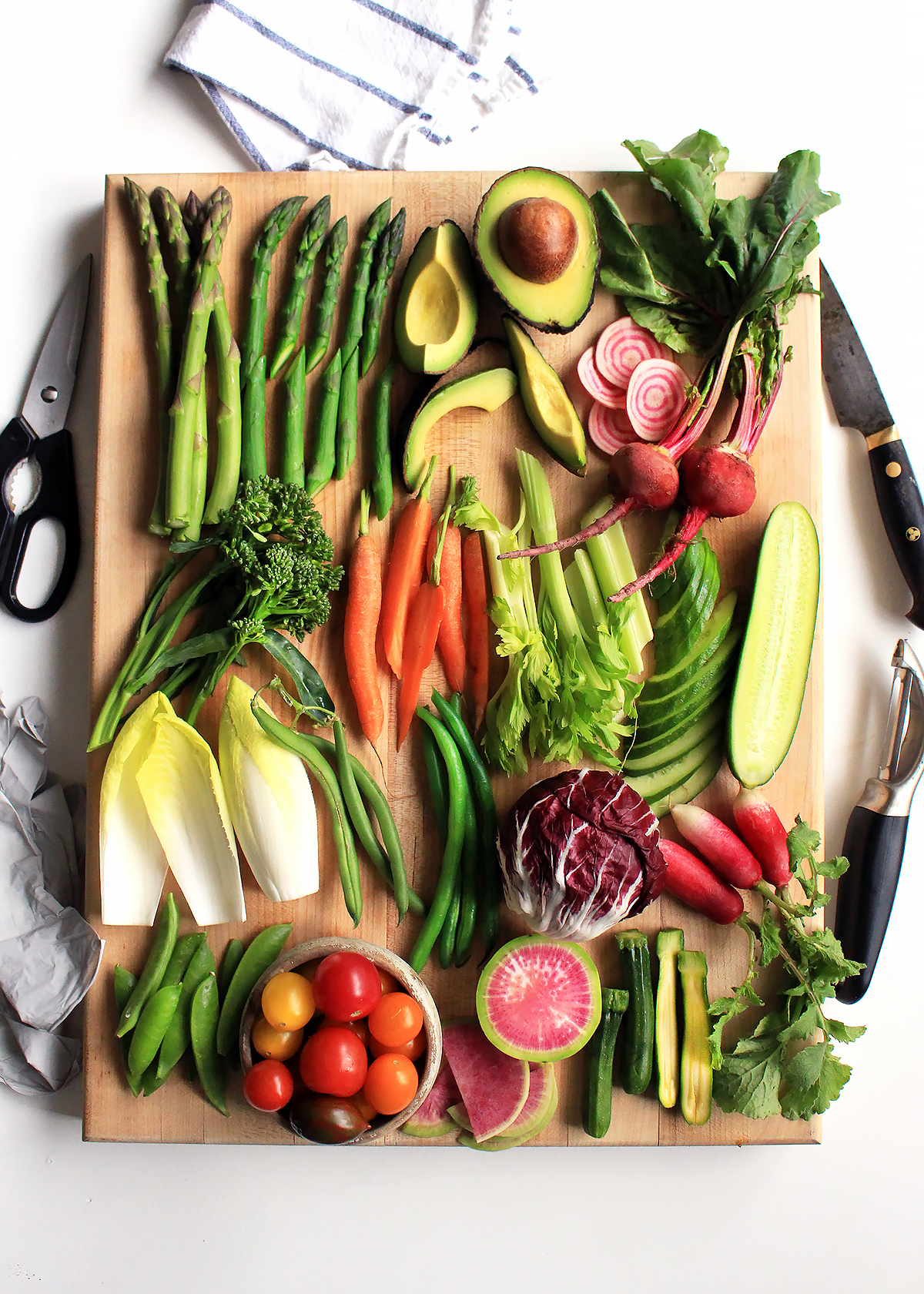
How to Prep Vegetable Crudités that Are Better Slightly Cooked
Yes of course you can eat asparagus, beets, broccoli, and green beans raw! And technically, crudités are raw vegetables. But these vegetables also taste infinitesimally better with just the lightest bit of cooking 1) to take the raw edge off the flavor and 2) to give it a super bright verdant color. And since getting people to eat more vegetables requires making it LOOK good... you know.
"Flash-blanch"
I call it "flash-blanching," which is slightly redundant since blanching vegetables in and of itself means to very briefly immerse vegetables in boiling water, but I use the word "flash" to really remind you: the vegetables aren't even close to cooking. Just a dip, literally a dip, in boiling water is essentially just giving the vegetables a bright gloss.
If you're doing a few different of the flash-blanched vegetables, you don't have to do each type separately. Just throw them all into one large colander together.
How to Serve Asparagus as Crudités: Lightly Cooked (aka Blanched)!
Go full Elle Woods on each asparagus stalk close to the bottom of the stalk and bend until it snaps. The stalk will break at the point where the stem changes from tender, which is edible, to woody which is still edible, but unpleasantly fibrous.
Put the clean, raw asparagus stalks in a colander, then pour boiling water over them. They will turn bright green from contact with the hot water, and will ever so slightly “cook,” if at all.
Rinse immediately with cold water, drain, and dry off the asparagus stalks.
Cut the stalks into 3-inch pieces. I make my cuts on a bias to match the angle of the asparagus tip. It is way too much detail, I know, but I have no other hobbies.
Serve Beets as Crudités: Raw or Roasted
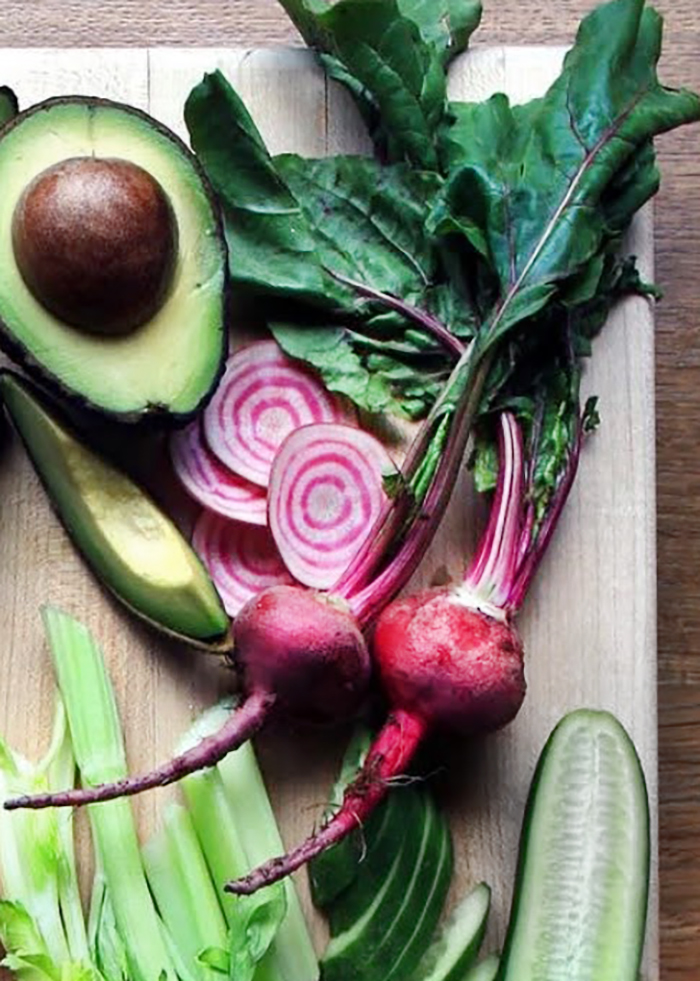
Baby beets are tender enough to be eaten raw. Slice them super thinly on a mandoline into "chips" which is especially pretty for candy stripe beets which are pictured.
My favorite Japanese style mandoline has been in my kitchen for 20+ years, no exaggeration.
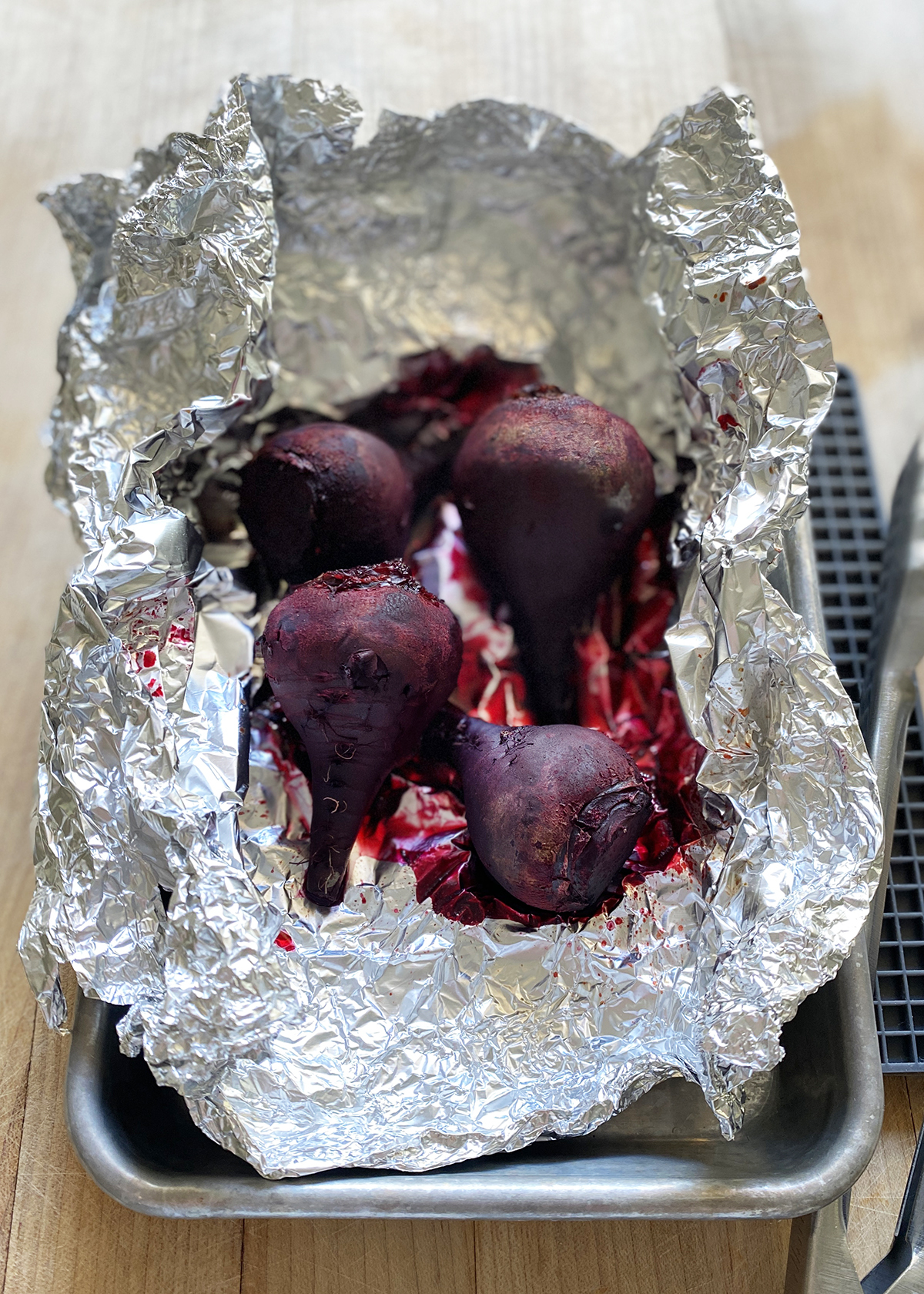
Larger beets can be scrubbed, rubbed with oil, wrapped in foil, roasted, peeled, then cut into quarters to serve.
Pro-tip for serving roasted red beets: Make sure you have small forks and plates for your guests. Red beets will semi-permanently stain hands and anything those hands touch, like your furniture and linens.
Broccoli on a Veggie Platter: Lightly Blanched!
If, out of last minute desperation, you’ve ever bought a pre-made veggie platter from the deli/catering counter or produce section of your grocery store, you’ve seen raw broccoli florets as crudité. That’s fine and all, but have you ever seen anyone actually eat raw broccoli in anything other than in a salad that is drenched, no drowning, in some sort of sauce? Right. No. So don’t serve the broccoli raw. Except: Baby whole broccoli, cauliflower, and their space-disco cousin Romanesco, are especially perfectly cute for a crudité board.
Use the same technique as for the asparagus, pouring boiling hot water over the stalks through a colander. Though the broccoli will still be almost as crunchy as it is raw, it will be very bright green and will look more edible.
Cut the florets or stalk into 3-inch pieces.
Green Beans on Veggie Platter: Lightly Cooked!
Oh yes you can put green beans on a veggie platter as crudités! Get whole fresh ones, which are perfectly fine and crunchy raw, but are even better when given the blanching treatment like asparagus and broccoli.
Trim the stem end off of each green bean
Pour boiling hot water over the green beans set in a colander, then immediately follow with ice cold water.
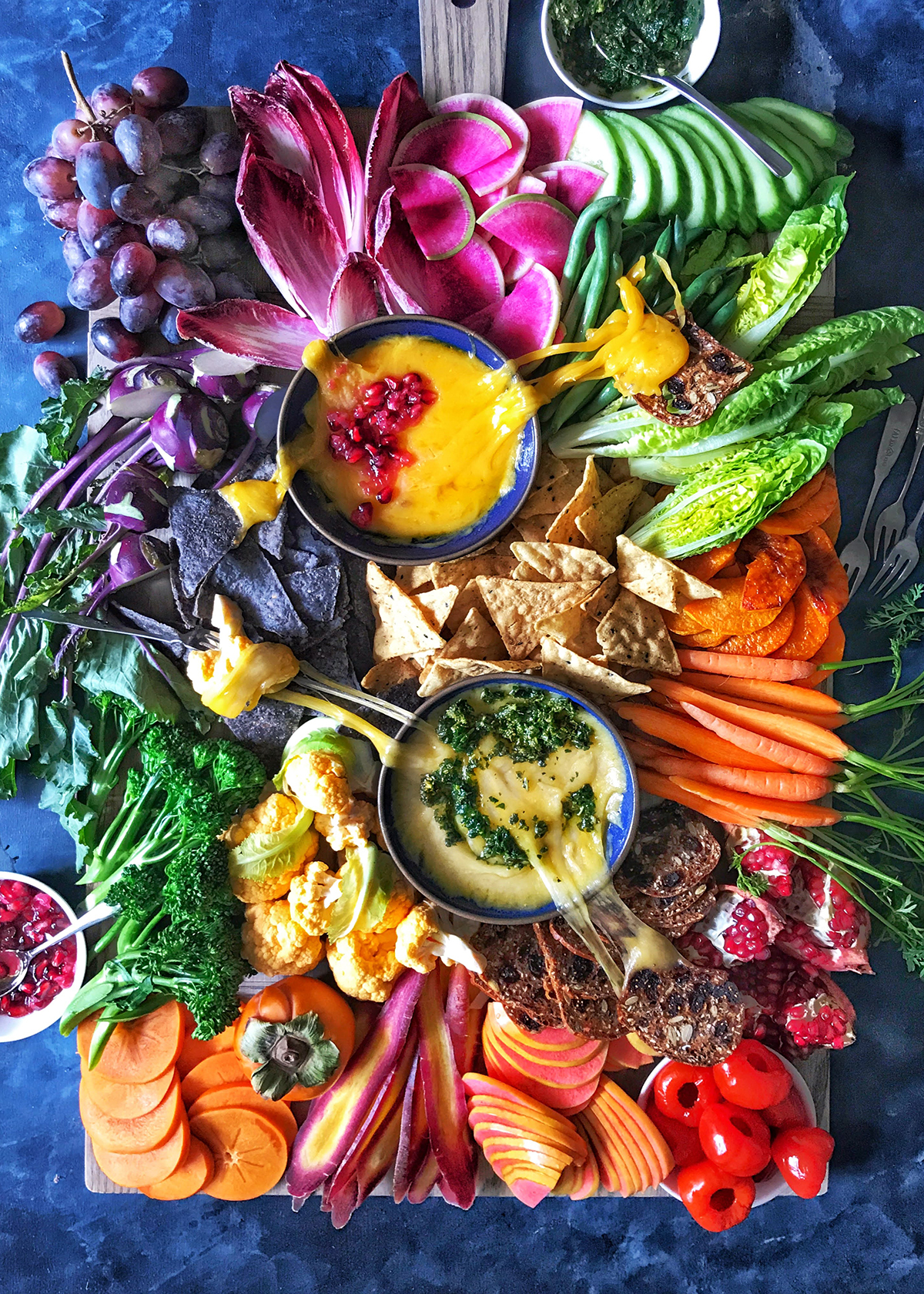
What are Some Non-traditional, Creative Vegetables for Crudités
What you serve will always depend on seasonal and local availability. Basically, any vegetable can be crudité-ed!
Cauliflower and Other Cousins in the Brassica fam (year-round): “Flash-blanch” the same way as we do for asparagus and green beans by pouring boiling hot water over the florets set in a colander. There are "baby" whole heads of different color cauliflower, broccoli, and romanesco that are really pretty and interesting.
Fennel: Slice the white bulb lengthwise. The slices will be pretty patterned.
Lettuces: If you can find teeny tiny Romaine heads called "Little Gems," get them! Slice them lengthwise into ¼ or ⅓ wedges.
Parsnips: Parsnips are gross to me. Prep them however you want, I don't care.
Peppers: Cut large bell peppers length-wise into ½-inch wide strips, or serve small sweet baby bell peppers whole or sliced in half length-wise.
Sweet Potato: Roasted sweet potatoes cut into wedges or chunks are good in the cooler months when tender, fresh baby vegetables aren’t as readily available, but we didn’t do it this time because we usually have sweet potato in one of our hummusesesesssesii. If you want to include sweet potatoes for their color on an especially bright board (orange or purple!) buy sweet potato chips and just throw them right on the board with the other vegetables.
Can You Prep Crudités in Advance?
Yes! You can and absolutely should prep crudités in advance! In, fact, this is exactly why crudites are so perfect for a party. And if you, like me, regularly make casual weekday meals out of a handful of vegetables and dip, crudités are kind of perfect "meal prep."
How far in advance can you prep crudités?
Wash any and all vegetables the moment you get them home from the market.
Most of the raw, fresh vegetables can be prepped 7 days in advance, then stored in air-tight containers. Some special tips:
- Carrots: To keep them even longer, store in tall containers filled with water, like you do with fresh cut flowers, and in the refrigerator.
- Tomatoes: Keep on the countertop at room temperature to keep them from getting grainy, and also saves you some refrigerator space.
- Watermelon radishes: If you store round slices submerged in water overnight in the refrigerator, they will slightly curls around the edges making them pretty ruffled on the board.
Flash-blanched vegetables can be prepped 3 days in advance. Store in the refrigerator in air-tight containers.
Best Tools and Equipment for Prepping Vegetable Crudites
I wash and prep A LOT A LOT A LOT of fruit and vegetables almost every day. These are some tools that make prep work a little easier. None of them are absolutely necessary except a sharp knife and a stable cutting board. Pro-tip: place a damp paper towel or kitchen towel under your cutting board to "anchor" it. There you go: stable cutting board.
- SALAD SPINNER: I have no idea how I ever lived before a salad spinner. I have this salad spinner, as I prefer the push spinning mechanism over a handle you have to turn yourself or a lever, which seems to never to apply enough spinning speed.
- FIT Fruit and Vegetable Wash: There are MANY fruit and vegetable washes on the grocery store shelves now, but I use FIT because it's the only one I've seen that is certified organic and, a silly detail that has somehow become important, the spray bottle shape and size fits better under my sink, if you know what I mean. Full disclosure: FIT's creator is a friend, but I don't get the product for free; I always buy it myself!
- SCRUBBER: To scrub vegetables, I actually skip the dedicated "vegetable brush" for the much more effective regular ol' kitchen scrubbing sponge. I keep it dedicated to vegetables and mushrooms because you don't want to use the one that gets soapy and touches dirty dishes. There are special brushes and cloths on the WOUG at BedBath and Beyond (Wall of Useless Gadgets) but I find the sponge the most effective and easiest to handle, not to mention least annoying to acquire.
- Vegetable Brush: Of course, I do HAVE a vegetable brush for getting bristles into deep wrinkles and grooves on carrots. This one has bristles made of natural (not plastic) fibers!
- PEELER: I have to use a vegetable peeler with a sizable handle and good grip because, like mentioned above, everything is slippery with water from washing everything.
- CUTTING BOARD: in the photo above is this one, great because it's huge and heavy so it doesn't move around even when there's water everywhere from ALL THAT WASHING you did to the vegetables. I have about 12 cutting boards, though.
- KNIVES: I have many knives, but for prepping a basketful of vegetables for crudite, I use only two, sometimes only one if I'm too lazy. For slicing avocados and cutting most vegetables, I use my Bob Kramer 7-inch Meiji Santoku . For small jobs like trimming leaves or scraping around stems on root vegetables, I use a small 4-inch paring knife.
- MANDOLINE: I have had this Japanese mandoline for years, and that is after I inherited from my Mom who had it the entire time I was growing up. The mandoline works well enough, but the blades, like me, are starting to dull with age. I'm going in for a minor upgrade, just something new, but I generally don't use fancy attachment blades, etc.
Best Hummus-Style Dips for Crudités
- Beet Hummus
- Avocado Hummus
- Edamame Hummus
- Restaurant-style Hummus, Fast and Easy with Canned Chickpeas
- Classic Hummus, from Dried Chickpeas
Dips for Crudités that Aren't Hummus
How to Prep Vegetables for Crudités
Ingredients
Fresh Raw Vegetables for Crudités
- avocado
- carrots
- celery
- cucumber
- endive, radicchio, and treviso
- radishes
- sugar snap peas
- cherry tomatoes
- watermelon radish
- zucchini
Lightly Blanched Vegetables for Crudités
- asparagus
- beets
- broccoli
- green beans
- optional: cauliflower, fennel, parsnips, mini bell peppers, sweet potatoes
Instructions
- Wash all vegetables, using a vegetable wash and brush or scrubber if needed.
Fresh Vegetables:
- Avocado: Cut straight through the skin and cut the avocado the “long way” into halves first. Pull the halves apart, remove the pit. Slice the halves, still with the skin attached, into quarters, then eighths. Leaving the skin and flesh intact keeps more of the avocado from oxidizing, and makes it easier for guests to pick up with their hands.
- Baby Carrots: Trim the green carrot tops down to about ¾-inch. Use a sharp paring knife to “scrape” some of the dark stuff from around the “neck” where the greens attach to the top of the actual carrot. I have no idea if this dirt, but it doesn’t look great, so do what you can to scrape it off.
- Celery: Cut off about 2 inches of the root end, which you can stick it in a small cup of water to grow into new celery!. Then pull apart the stalks. Trim the leaves of any brown or wilted leaves and bits. Cut each stalk into thirds, about 3-inch pieces. I make bias (diagonal) cuts because that is how we have cut vegetables our whole lives. Serve the most tender inner stalks, and also the leafy tops, which present well on the board.
- Cucumbers: Cut the cucumber in half length-wise. Make ½-inch slices along a deep bias to make spears.
- Endive, Radicchio, and Treviso: Pull apart the leaves, and trim the bottom of each leaf of the jagged edges. Great for scooping. For radicchio and treviso, the innermost leaves are sturdier and better for scooping or dipping.
- Radishes: Scrubbing them well, leaving the green tops and leaves, and scraping away the dark spots around the “neck.” For regular round radishes, cut into small wedges, or thinly slice on a mandoline into rounds like baby beets.
- Sugar Snap Peas: Use kitchen shears to trim dark stem ends. And that’s it.
- Tomatoes: Just wash.
- Watermelon Radish: Trim the green top and the root end off the radish. To make it easier, cut the radish in half the “long way,” then slice each half into half moons using a mandoline. Use a very sharp knife to carefully “peel” the thinnest, outermost skin of each slice. It may seem time-consuming to peel by hand for each individual slice, but it’s easier and makes for a “smoother” edge than trying to use a peeler on a whole, round radish.
- Zucchini: If the squash are thin enough, you can serve them whole, otherwise, slice them the long way into halves or quarters.
Lightly, Flash-blanched Vegetables:
- Beets: Baby beets are tender enough to be eaten raw. Slice them super thinly on a mandoline into "chips" which is especially pretty for candy stripe beets. Larger beets can be scrubbed, rubbed with oil, wrapped in foil, roasted, peeled, then cut into quarters to serve.
- Broccoli: Pour boiling hot water over the stalks through a colander. Cut the florets or stalk into 3-inch pieces.
- Green Beans: Trim the stem end off of each green bean. Pour boiling hot water over the green beans set in a colander, then immediately follow with ice cold water.


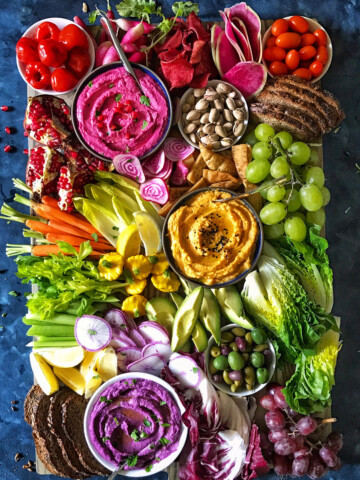
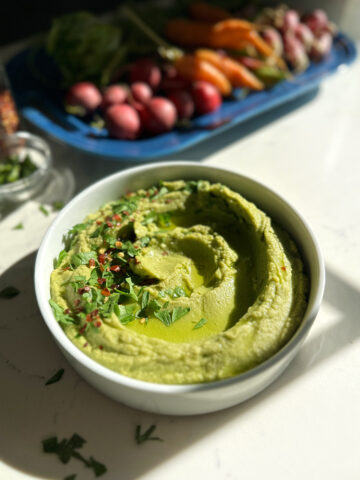
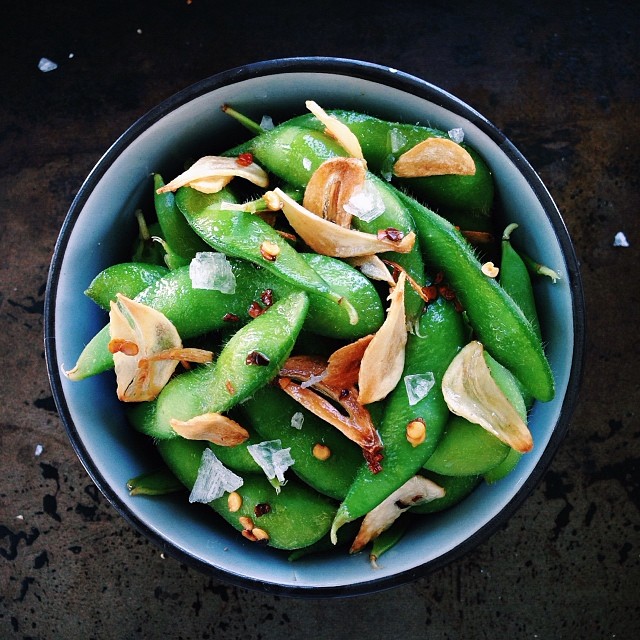
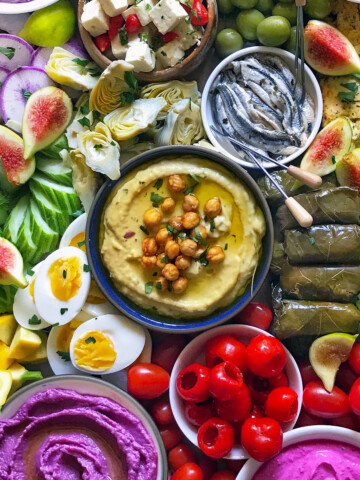
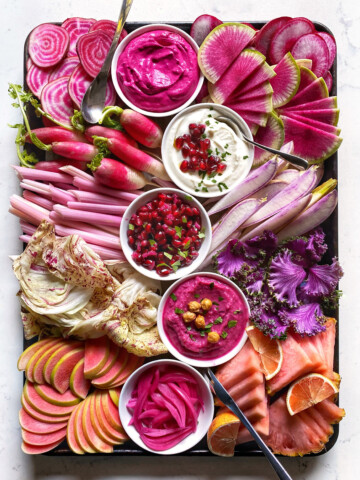
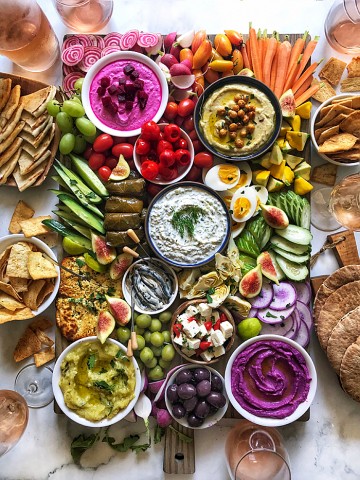
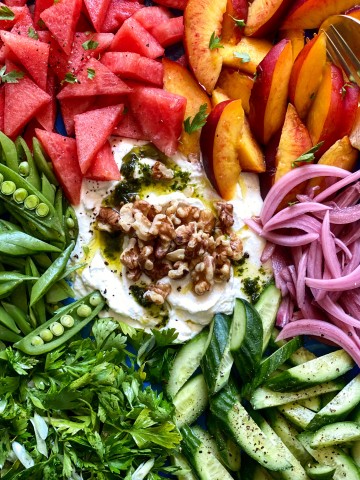
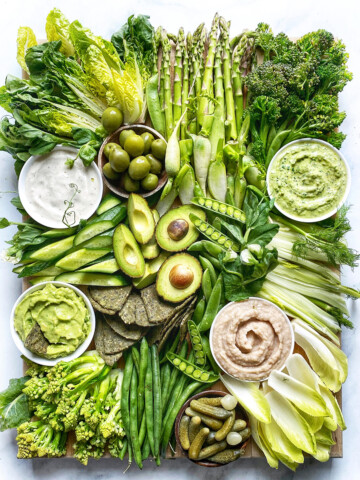
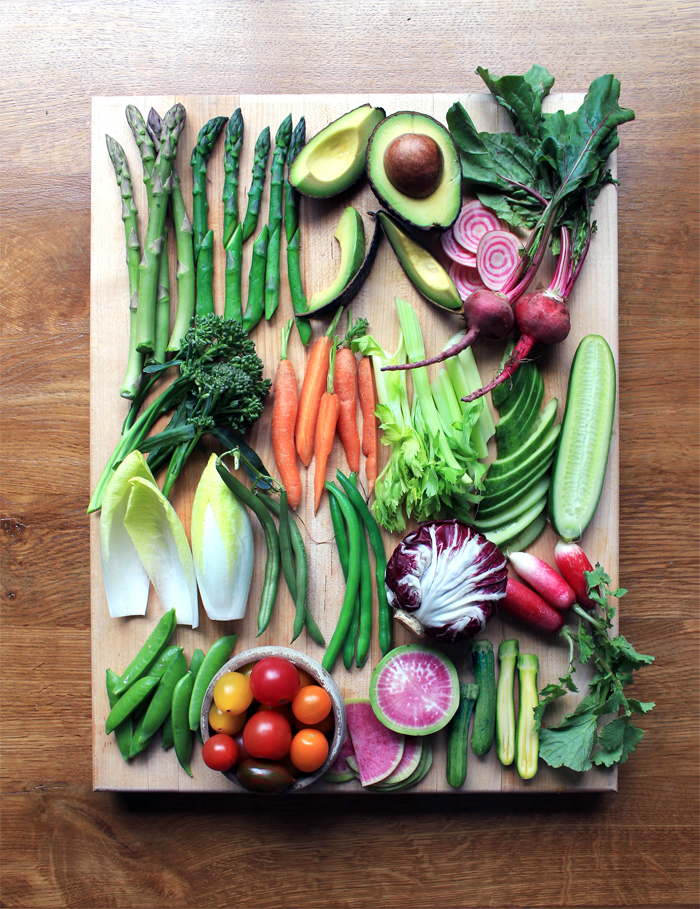
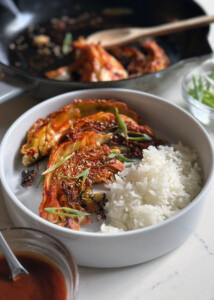

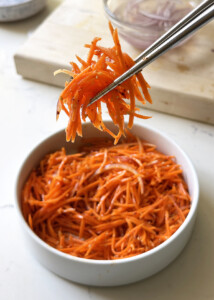

Kashish Food says
I appreciate your prep of vegetable for Crudites. The Crudites are nutritious dishes for supporting good health.
Aurelia Holliman says
Thank you! Creative, informative and fun!